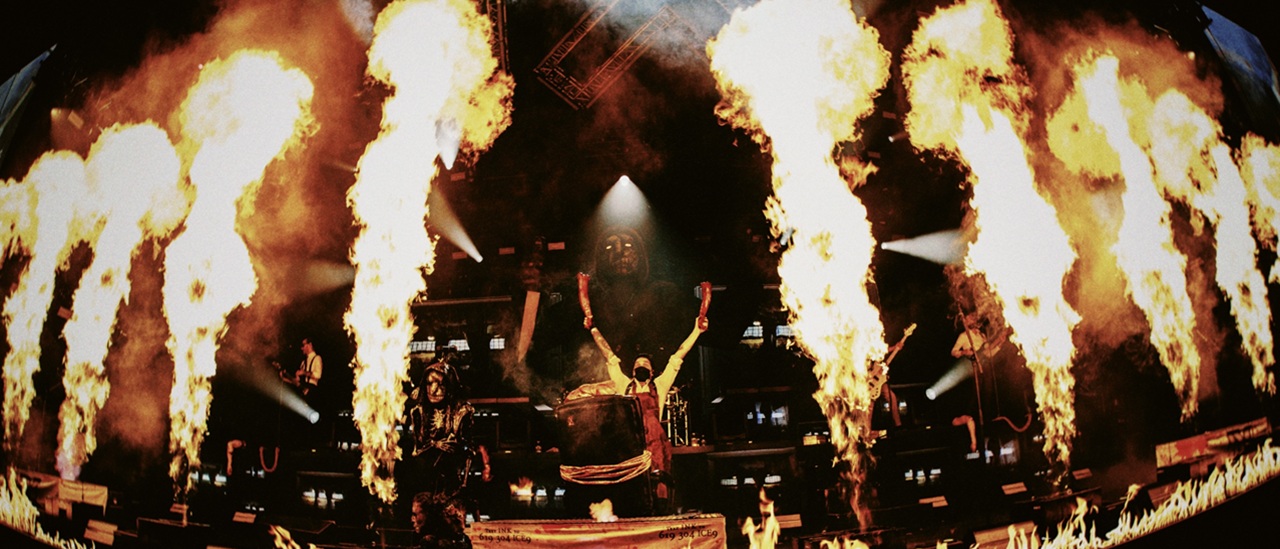Faith No More: No More Bull
Reunion shows. An unexpected album. A brand new attitude. Faith No More tell Hammer why they’re putting their confrontational past behind them and getting back into the ring...
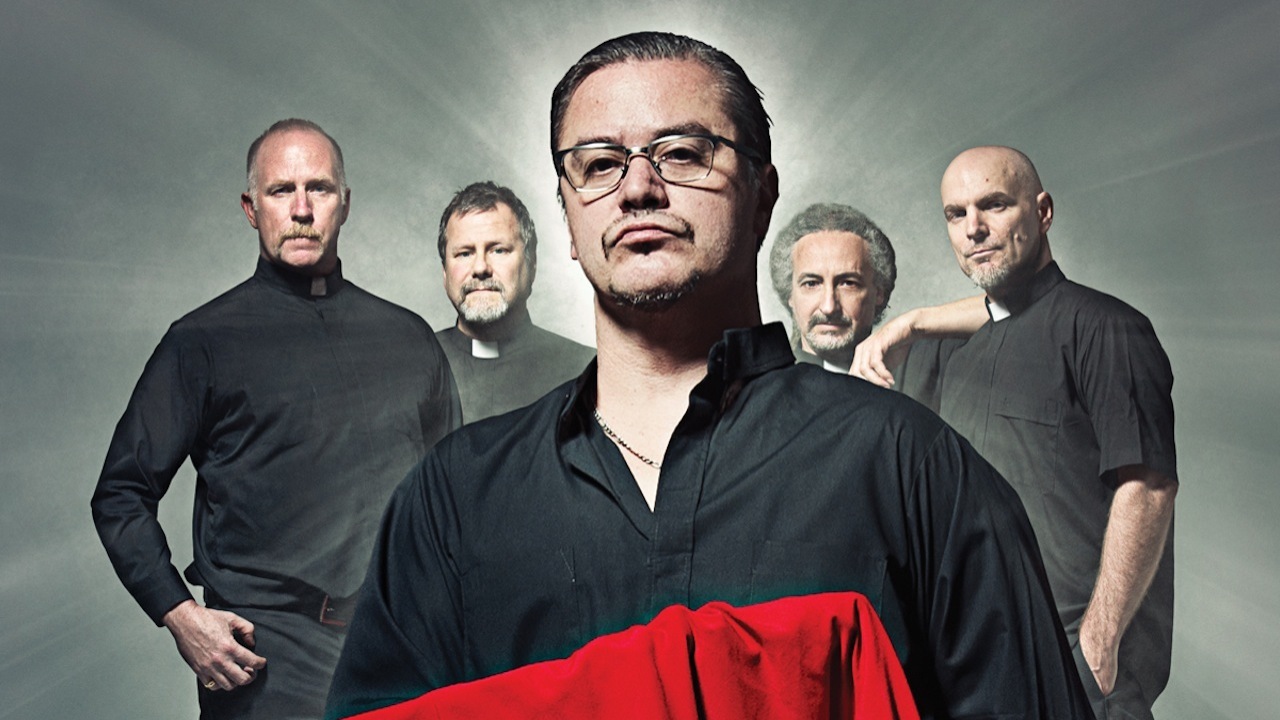
It was on a cloudy Friday night in June 2009 that five men in varying states of middle age walked out onto the Download Festival stage, to solidify the reunion that people thought would never happen.
In the face of unbearable expectation, Faith No More – the San Francisco band who had revolutionized rock and metal in the early 90s, before imploding under the weight of frustration with the music industry and with each other – had gone for a supper-club vibe for what was only their second show in 11 years, following their appearance at London’s Brixton Academy two nights before.
Against a backdrop of giant red curtains, four-fifths of the band ambled onstage sporting matching black suits and proceeded to ease into a faithful cover of Peaches & Herb’s disco-era cheesy listening classic, Reunited. A minute later, singer Mike Patton appeared, clad head-to-toe in red and leaning heavily on a cane, as if the interim decade had aged him beyond his years. “The break-up we had has made me lonesome and sad,” he crooned to audience and bandmates alike. “I realise I love you ’cause I want you bad, hey hey…”/o:p
It was the perfect opening shot: unexpected, contrary, antagonistic and funny. But then unexpected, contrary, antagonistic and funny was precisely what Faith No More were always about. The cover version was a gag, of course, albeit one that contained some truth. As the singer swapped his cane for a microphone – and later, a megaphone – it became clear that Faith No More, as the world knew and loved them, were very much back.
No one was more surprised at this fact than bassist Billy Gould, the man who had co-founded the band almost 30 years before, and spent the best part of two decades clinging onto their own personal rollercoaster for dear life. For Gould, the return of a band he’d long ago packed away behind a locked door was a strange experience./o:p
“It was very, very surreal,” he recalls. “Hearing this music coming out of these people was weird. In a good way, actually. On a personal level, in a very good way.”
On June 13, Faith No More will return to the scene of the crime. They’re due to appear once more on Download’s Main Stage, on a bill headlined by, amongst others, Slipknot, one of a legion of bands who owe them an acknowledged debt.
Sign up below to get the latest from Metal Hammer, plus exclusive special offers, direct to your inbox!
The fact that this once-notoriously fractious band are still here is a surprise. But not as much as a surprise as the fact they’re bringing with them a new album, Sol Invictus, that easily holds its own against anything they released in the turbulent, triumphant days of the 80s or 90s. “This band was buried,” says Mike Patton today. “And we dug it up.”/o:p
Drummer Mike ‘Puffy’ Bordin calls the 2015 version of his band Faith No More 2.0. While it’s not their official title, you can see his point. The brilliantly awkward brat princes who once ran riot are older, wiser and notably more tolerant of the world and, crucially, each other. “We played a bunch of shows,” says the dreadlocked Bordin, a garrulous and friendly fast-talker whose tribal drumming style was one of about three million things that set Faith No More 1.0 apart from their peers. “More importantly, we found that we didn’t hate each other.”
On paper, Faith No More should never have worked. Five square pegs hammered into one giant round hole, they were the ultimate group of misfits. But they did work, and on a huge scale. Pre-Nirvana, it was FNM who brought together rock’s different subcultures: the thrashers, the glam metal fans, the alt-rock kids. The impact they had echoed down through the bands that followed them, from nu metal hordes, to the post-hardcore heroes, right up to present-day arch-experimentalists such as Tesseract. Like few bands before and none since, FNM were the great unifiers – even if that wasn’t part of the plan.
“The way we approached things was to eliminate rules, not create them,” says Gould. “You want to try to keep yourself free as a musician, and don’t be something that people expect you to be.”/o:p

Looking at it in those terms, the 2009 reunion made perfect sense: an elaborate double-bluff aimed at everyone who expected them never to get back together. But that would be overthinking things. Reunions usually happen for one of three reasons: friendship, money or legacy.
“The reunion started as a way of reconnecting with each other and rebuilding relationships,” says Patton, a man whose past reputation as alternative rock’s own Imp Of The Perverse is at odds with his ultra-polite, if ultimately diplomatic, manner today.
“I’ve known these guys longer than anyone else I’ve worked with. It’s a grounding feeling. Even after all these years, someone will come in with a crazy notion, and you know where they’re coming from. If that was someone I met a week ago, in a symphony hall, I’d go, ‘You’re out of your fucking mind, what are you talking about?’ There’s a trust level with Faith No More that’s just… deeper.”
Two years ago, it was Mike Patton who said that the reunion had “sort of petered out”. So what changed?
“Initially, jumping into the reunion was challenging – healing wounds, building bridges, whatever,” says keyboard player Roddy Bottum, a man who played a significant part in breaking down heavy metal’s less enlightened outlook in 1993 when he became the first high-profile musician to come out as gay. “After a while, we got kind of good it at and we were back to where we were. I don’t think any of us were interested in continuing what was really easy. We didn’t want to feel like we were dragging around this dead material like a nostalgia act.”
Bordin puts it in blunter terms: “There’s a line in the [1992 Al Pacino] film Glengarry Glen Ross: ‘It’s fuck or walk time.’ And that’s really what it was. It was fuck or walk time.”/o:p
If you want to get to the heart of Faith No More in 2015, you have to travel 5,000 miles west and 33 years back in time, to San Francisco in 1982. It was there, in that most bohemian of American cities, that Bordin and Gould joined forces in Faith No. Man with singer Michael Morris. As the maverick punctuation suggests, Faith No. Man took their cues from rock’s outliers, particularly such experimental British post-punk bands as Killing Joke and Siouxsie And The Banshees.
Roddy Bottum joined Faith No. Man shortly before they lost the full stop and changed ‘Man’ to ‘More’. He remembers his first gig vividly. “There were all these transgender hookers, sex workers, crystal meth, a lot of junkies,” he says, laughing and making it sound like it was the best thing in the world.
They may have rehearsed in a six-storey former-brewery-turned-punk-rock squat called The Vats alongside San Francisco punk linchpins such as Flipper and MDC, but Faith No More were outsiders even amid San Francisco’s underground scene. “We weren’t a punk band, so we couldn’t do the punk shows,” says Bordin. “We weren’t an alternative band. We were not a metal band in that sense of the word. That old writer you guys have, Billy Shakespeare, he said it: ‘Neither fish nor flesh.’ That was us.”/o:p
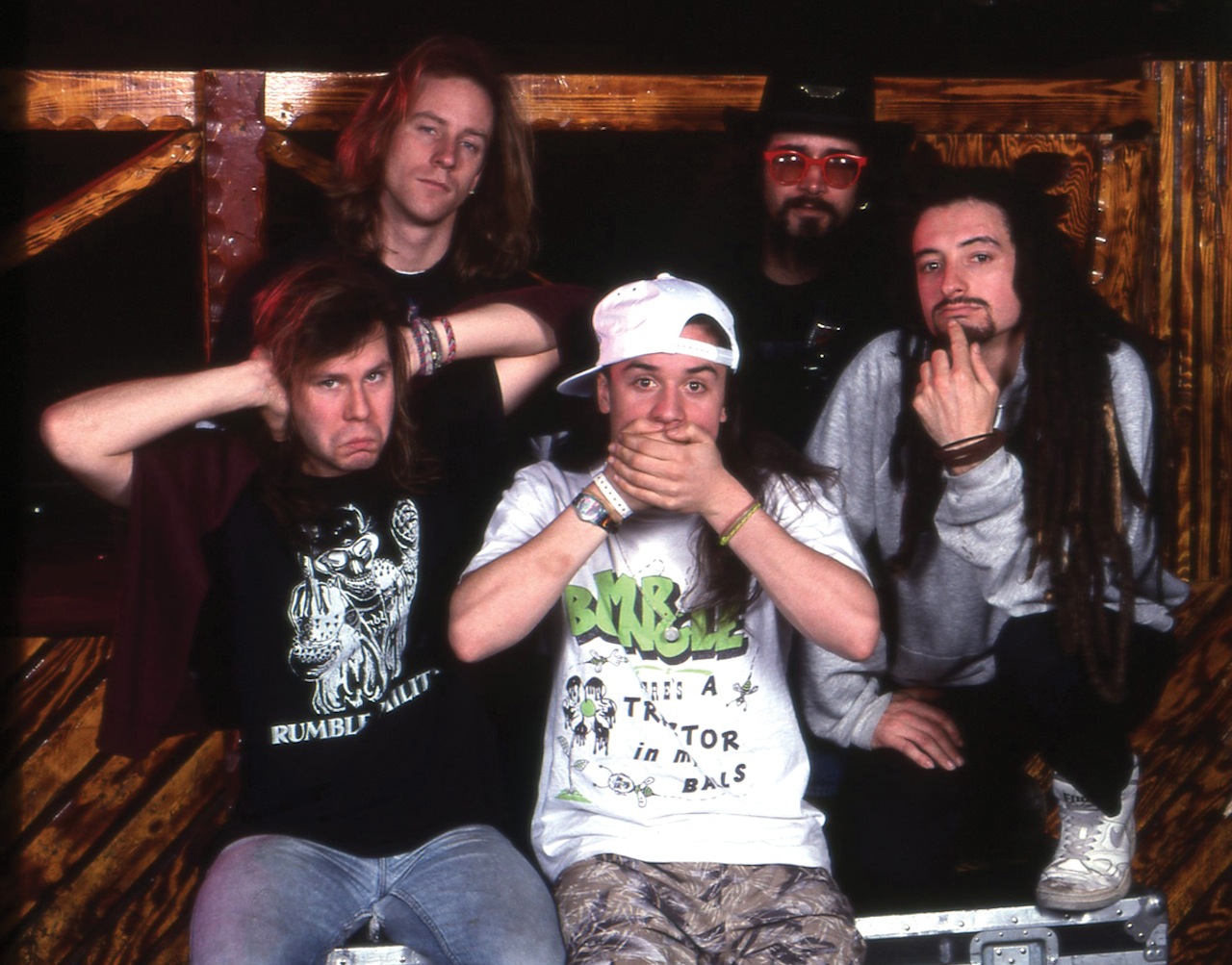
Such was their dedication to nonconformity that they went through a period of playing each show with a different set of songs and a different singer (one of these vocalists was a bratty upstart named Courtney Love, later to find fame as the singer with Hole). Their cause wasn’t helped by their deliberately provocative approach to gigs – something that would stay with them down the years.
“We were really just fucking with people in a crazy way,” says Bottum. “I remember we played Jump by Van Halen, which was just ridiculous for a band like us. We were so obnoxious. We really wanted to push people’s buttons.”
Gould and Bottum shared a single room in a run-down apartment. There was no furniture; they slept on piles of dirty clothes. The only entertainment was the TV they’d splashed out on. They would spend their time watching the revolutionary new music channel MTV, half in irony, half in awe.
“It was another universe; something we never thought we’d connect to,” says Gould. “At the same time, it was something that was like a little code you could crack. We looked at it like we were hackers: ‘Imagine if we could actually get through that. How would you crack that?’ It was like robbing a bank.”
In 1985, they released their debut album, We Care A Lot, on underground label Mordam. The sardonic title track managed to be ironic and anthemic at the same time. When they re-recorded the track two years later for their second album, Introduce Yourself, it became a surprise MTV hit, especially in the UK. Despite their best efforts, the code had been cracked, the bank robbed.
“I wrote those lyrics, and it was just an anthemic thing,” says Bottum. “I did feel, ‘Oh yeah, this is it.’ It felt to me like a pop song that could be really big. It did feel like We Care A Lot was the big thing that opened the door.”/o:p
But Faith No More’s capacity for self-sabotage was embedded early on. Their first two albums featured singer Chuck Mosley, a man whose laconic drone was as identifiable as Bordin’s drumming or Gould’s twanging bass. But no sooner had We Care A Lot raised their profile than the band fired him. Mosley subsequently claimed it was down to musical differences.
“At the time that was a horrible decision,” says Gould. “But we needed to do it, and we came through that.” The band didn’t know it at the time, but getting rid of their singer was the best decision they could have made. His replacement was a 20-year-old livewire from up the coast in Eureka, Northern California. The kid’s name was Mike Patton, and he sang with Mr. Bungle, a group of youthful noise terrorists whose demo tape, The Raging Wrath Of The Easter Bunny, sounded like thrash metal played by Frank Zappa.
“He was super-talented,” recalls Bottum. “He had a crazy range in terms of what he could do. I saw Mr. Bungle; they were doing a similar thing to what we did, just jumping all over the map.”
“It was an entire fucking sea change,” says Bordin. “It was like trading in a Model T Ford and getting a turbo Lamborghini or a fucking McLaren. That’s Mike Patton. I’m in awe of that fucker. He was interested in adventuring and exploring and going there – and he had the talent and vision to get there.”/o:p
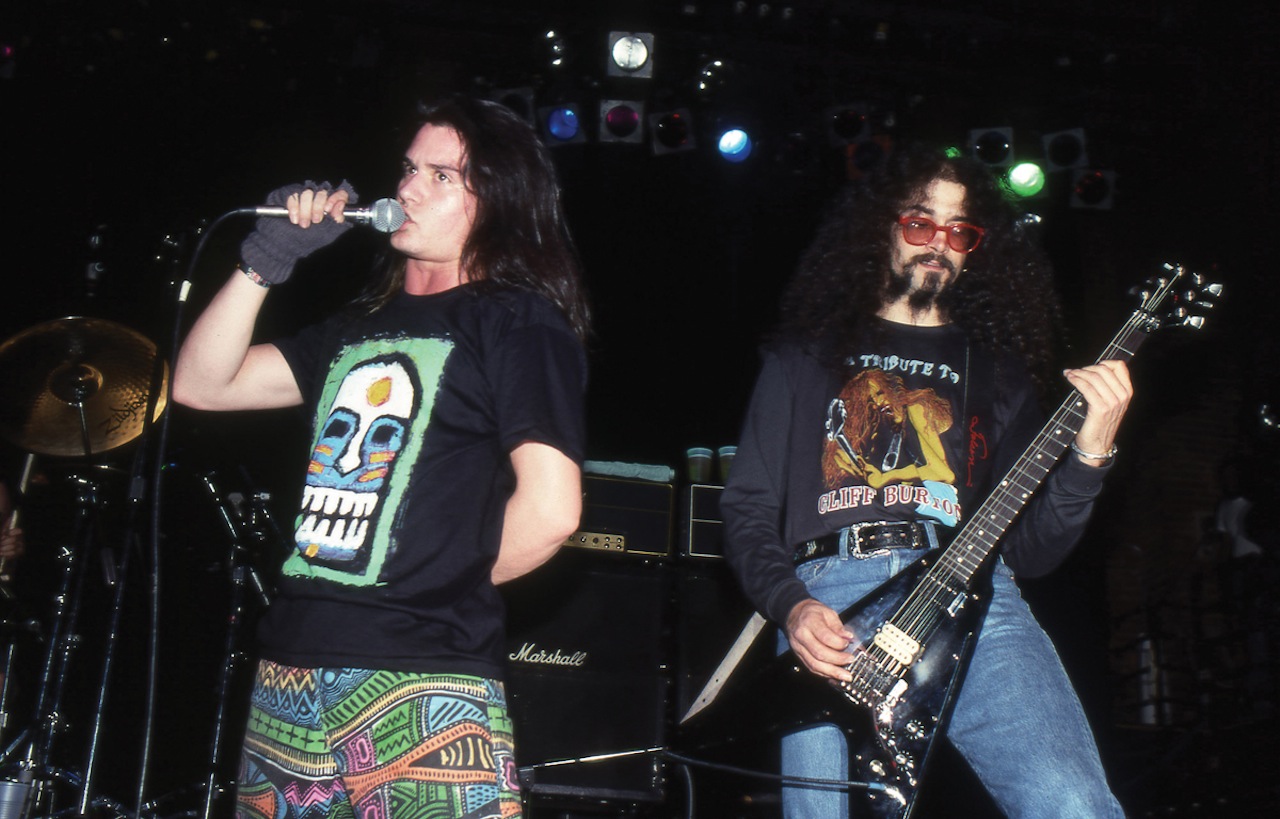
That Patton helped turn Faith No More into one of the most innovative and successful bands of the 1990s is beyond doubt. Their first album with the new singer, 1989’s The Real Thing, promoted them from opening act on a three-band bill headlined by Canadian prog-thrashers Voivod, and also featuring a hotly tipped outfit from Seattle called Soundgarden, to bona fide MTV stars.
The revelatory one-two of singles From Out Of Nowhere and Epic was a blast of fresh air, and the fact they had a poster-boy singer in the band didn’t do them any harm (even if he was a poster-boy with a penchant for talking effusively about masturbation in interviews). Either way, this eight-year overnight sensation had finally made it.
“Did we ‘make it?’,” says Bordin. “I don’t even know what that means. What, I’ve got liquid cocaine running out of my eyeballs, people wiping my butt for me? When everything changed, it was like you’re in that carnival ride where they put you against the wall and start spinning and the floor falls out. Success is overwhelming; it’s disorientating.” /o:p
Equally beyond argument is that Faith No More were one of the most dysfunctional bands of the time. Every group is made up of different characters. It just seemed like the five characters in Faith No More shouldn’t have been in the same city, let alone the same band. At least that’s the way the press presented it.
“We embraced it,” says Patton. “We thought it was funny. ‘This guy is the masturbator, this guy is gay…’ If people are misinterpreting you, at least they’re interpreting you. It’s a sexier story if we’re portrayed as some band that fights, that are all different characters, blah blah blah. That was, for a period of time when people actually gave a shit, the ‘selling point’ of our band.”
Whether the levels of friction were exaggerated or not, the push-me-pull-you relationships between the bandmembers did nothing if not contribute to Faith No More’s uniqueness. And nowhere did that uniqueness manifest itself more startlingly than in Angel Dust, which still stands a one of the strangest and most beautiful albums of the 1990s.
If The Real Thing wrapped up its tales of masturbation and paedophilia in the sweetest of melodies, then Angel Dust made no such compromises. Its three singles (Midlife Crisis, A Small Victory and Everything’s Ruined) might have echoed the FNM of the last album, but for the most part it was shot through with black-hearted noise (Caffeine and the furious Malpractice) and twisted humour (a wah-wah-drenched faux-70s cop show theme was called Crack Hitler, while Be Aggressive was a paean to gay fellatio complete with a cheerleader chorus). It was the finest example of a band staring down their audience to see who blinked first, though according to Bordin, Faith No More’s greatest album is also their most misunderstood.
“I don’t want to say it was a reaction to success, or a conscious attempt to say, ‘Well, fuck that’,” the drummer insists. “No, it was our evolution. We made Angel Dust and we were fucking excited to share it with everybody. We thought it was great. And every other fucker said: ‘What the fuck is this? Where’s Epic? Where’s From Out Of Nowhere?’ Except in the UK, and you must get credit for that.”/o:p
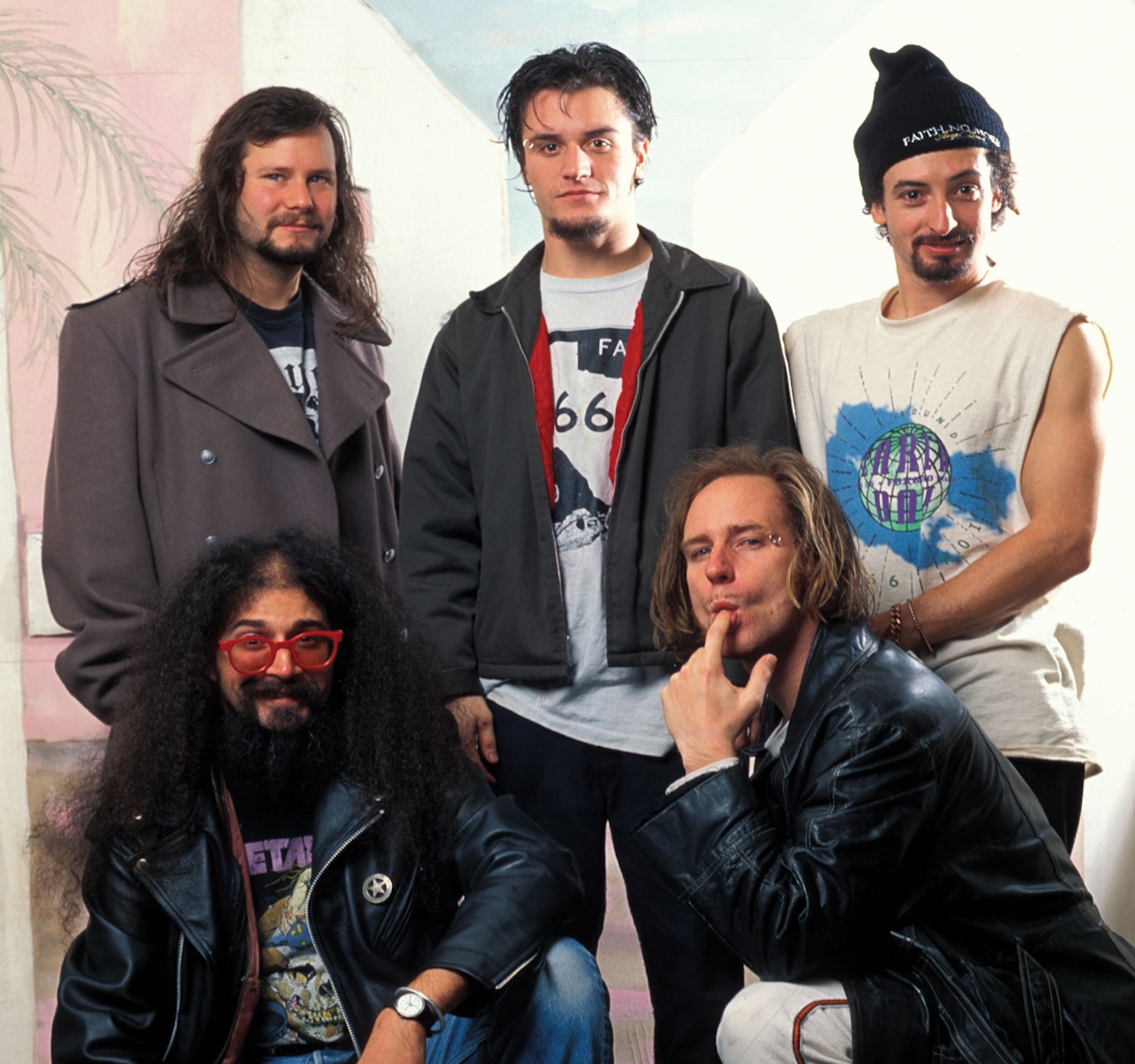
Unsurprisingly, Angel Dust lost much of the ground FNM had made up in America. But from an outside perspective, that wasn’t as much of a disaster as the departure of Jim Martin. The guitarist was an unreconstructed metalhead in a band who most definitely weren’t either of those things – an outlaw in a group of outlaws.
“We couldn’t have continued with Jim,” says Bordin simply. “And he couldn’t have continued with us.”
But Jim’s departure was symptomatic of deeper problems. Angel Dust itself might not have been a reaction to success, but the bandmembers were certainly having their own issues with it. Patton was openly contemptuous of what a rockstar should be, drinking his own urine from a shoe onstage and admitting to shitting in hotel hairdryers out of sheer boredom. Bottum nursed an increasingly debilitating heroin habit, something which – combined with the deaths of both his father and his close friend Kurt Cobain – would eventually prompt him to temporarily step away from the band to clean up and deal with his losses. And, whether they liked it or not, the personal strains that the press loved to magnify were becoming an issue.
“We would fight a lot, get drunk, say things we shouldn’t,” says Bottum. “It became a drag,” says Bordin. “It was just talking to talk. You say stupid shit because you’re bored and people lead you in weird ways.”
The last two albums the band made during their original run – 1995’s brilliant, multifaceted King For A Day… Fool For A Lifetime and 1997’s stately Album Of The Year – were both great. But the band who made them were burned out – with the music industry and with each other. The end, when it came in 1999, arrived not with a bang but a whimper.
“I brought it up,” says Patton. “I remember being very nervous about it: ‘I’m going to quit the band today, and these guys are gonna kill me.’ But it went surprisingly OK. Everyone just looked and laughed, and went, ‘Man, we feel the same way.’”
Bordin: “Could we have carried on after Album Of The Year? No. We had said what we’d had to say. The petty baggage was high around our necks at that point. It wasn’t gonna happen. Everybody else at that point had interests in doing other shit.”
Gould: “What I saw it as was rats jumping off a sinking ship. Of all of them, I was the one that went down with the ship. But I’d had enough. I was tired, too. It was a good thing to do. It just didn’t feel so good at the time.”/o:p
During their 10 years away, the members of Faith No More carved out careers that took them well away from their former band. Bordin signed up as Ozzy Osbourne’s drummer; Gould founded the eclectic record label Koolarrow, and played with everyone from Korn’s Munky to punk icon Jello Biafra; Patton collaborated with a frankly head-spinning range of musicians from The Dillinger Escape Plan to Björk; and Bottum focused on his indie-rock side project, Imperial Teen, and wrote soundtracks. The keyboard player echoes everyone when he says the thought of a reunion never crossed his mind.
“There wasn’t even a shred of possibility. It was such an intense process going through from the beginning of Faith No More to the end of Faith No More. By the end of it, everyone else was like, ‘I don’t need to see you again, pretty much ever.’”
Ironically, it was Bottum who inadvertently played a key role in sowing the seeds for The Reunion That Would Never Happen.
“We had a chance meeting at Roddy’s wedding of all places,” says Patton. “After that, we were like, ‘I miss you!’ ‘I miss you too!’ Once we reconnected, just the concept of doing a reunion became a little bit more possible. Like, ‘Wow, this could be a chance to rewrite some things, mend some fences.”
For Gould, it was a strange scenario. He was out of the country for the wedding, and had no idea that his former bandmates had met.
“I found out that they were all hanging out, and I thought that was a little weird,” he says. “And I happened to be in LA at the time and they happened to be in LA at the time, so we got together for lunch. I just thought, ‘I’ve got nothing to lose.’ It was the first time we’d all been in the same room since 1999.”
And how was it?
“Much more pleasant than I thought it’d be,” he laughs. “The first thing that comes to mind with something like that is, ‘Someone needs money.’ I had a very negative gut feeling about it. But when you’re apart you remember the bad things. When you’re together, you remember the good things. And being in the room and laughing and telling stories and stuff… it was nice reconnecting.”/o:p

Even then, it was a tentative process. Emails were exchanged, bridges were rebuilt. And then an offer came in to play a show.
“I remember saying, ‘I’m not really scared of this…’,” says Bottum. “Everyone pretty much said the same thing: ‘I’m not opposed. We were just sort of feeling each other out. It was a big decision.”
A show turned into a tour, which turned into a fully fledged three-year reunion. And that’s where it could have ended, had Gould not taken it upon himself to start writing a new Faith No More album in secret. Aside from Bordin, who sometimes joined him in the studio to work through songs, the rest of the band had little or no idea what was happening.
“We’re not the sort of band who trumpet every fucking thing we do: ‘Faith No More took a bowel movement today’,” says Bordin. “The deal is this: Bill did have demos, yes. He never stopped writing, because Bill never stops writing. He’s a fucking talented musician.”
“It would be kind of presumptuous to say I was writing something for Faith No More,” the bassist says now, “because there was no guarantee the rest of them would want to do it. But I’ve known these guys for 30 years, I know how they approach things, and I’d hope they would pick up on it. And it was the best of possible outcomes.”
The song that sold the deal was Matador, the track that inspired the shoot within these very pages. Gould played it to the rest of the band during rehearsals for a South American tour. They started work on the album nearly two years ago, and finished mixing it last December. When it was announced earlier this year that FNM would be releasing their first album in 18 years, it was a huge surprise. You can’t help thinking that no one was as surprised as the band who actually made it.
“In America, there’s something called an ‘Oops Baby’,” says Bordin. It’s like, the woman who’s 45 and wants another kid and is, like, ‘Fuck, I’m too old, it’s not gonna happen.’ And then it does happen: ‘I’m 45… oops, I’m having a baby.’ This album is a fucking ‘Oops Baby’ for us.”/o:p
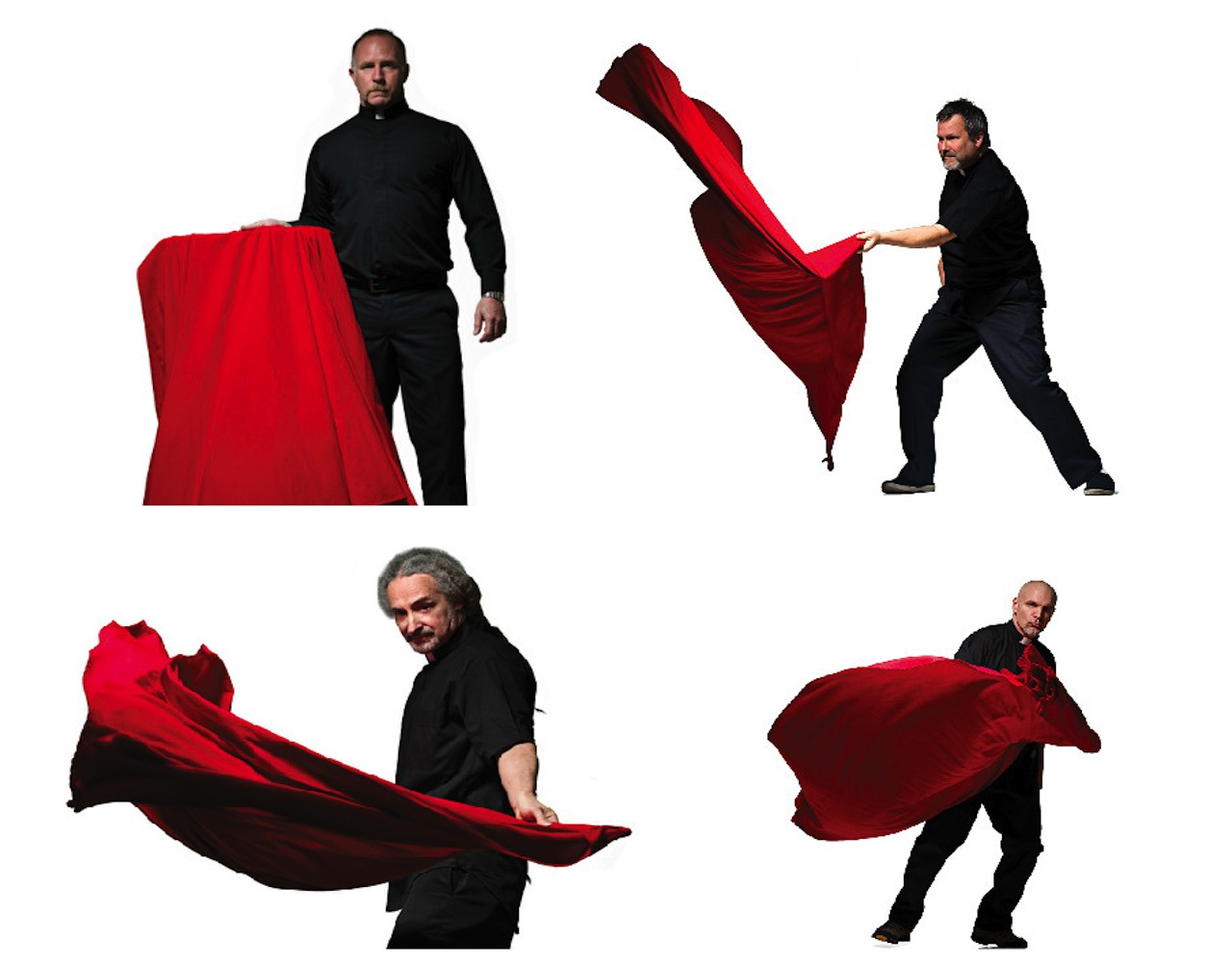
Which brings us back to 2015, and Faith No More 2.0. “We went through a ton of shit,” says Bordin of their 30-year journey to get here, “and it was eye-opening and life-changing and earth- shattering.”
But the crazy gang have grown up as people, even if Sol Invictus proves they still have the capacity to surprise on a musical level. Its 10 tracks pinball between dank, gothy slowburners (the title track), ironic commentary on American icons (the steel-plated Superhero), to the sort of nagging endurance test designed to separate the wheat from the chaff (Separation Anxiety). In typically contrary FNM fashion, its most radio-friendly moment bears the title Motherfucker.
But its appearance also adds a level of complication that seems to follow Faith No More wherever they go. It’s not clear if Sol Invictus is just a postscript in a long and chaotic story, or the start of a second volume for the most influential band of the last 25 years (give or take a Nirvana). The $64,000 question is: have Faith No More got more albums in them after this? The answer, as with everything in their world, is ambiguous, murky and as far from nailed-on as it could be.
“Look, what drives this whole goddamn thing is the music,” says Patton. “If there’s more music, which there is, if it comes together in the right way, at the right time, and we all feel good about it, then fine. But it really has nothing to do with the way I feel about it. It’s a confluence of energies and circumstances. If the entire band had this mission statement, ‘Yes, we’re going to make 10 more records,’ it wouldn’t happen. We’re very much working on the principle of, ‘Hey, we’ve got something nice going now – hang on to it.’ And then let’s see what happens. No promise.”
Gould adds: “There’s some great ideas that we have that could be really cool to flesh out. I think that everybody is into it, so it’d be a great thing.”
“Does Faith No More have a life after this album?” says Bordin. “How the fuck do I know? Stay tuned, babe…”
SOL INVICTUS IS OUT NOW VIA RECLAMATION/IPECAC/o:p
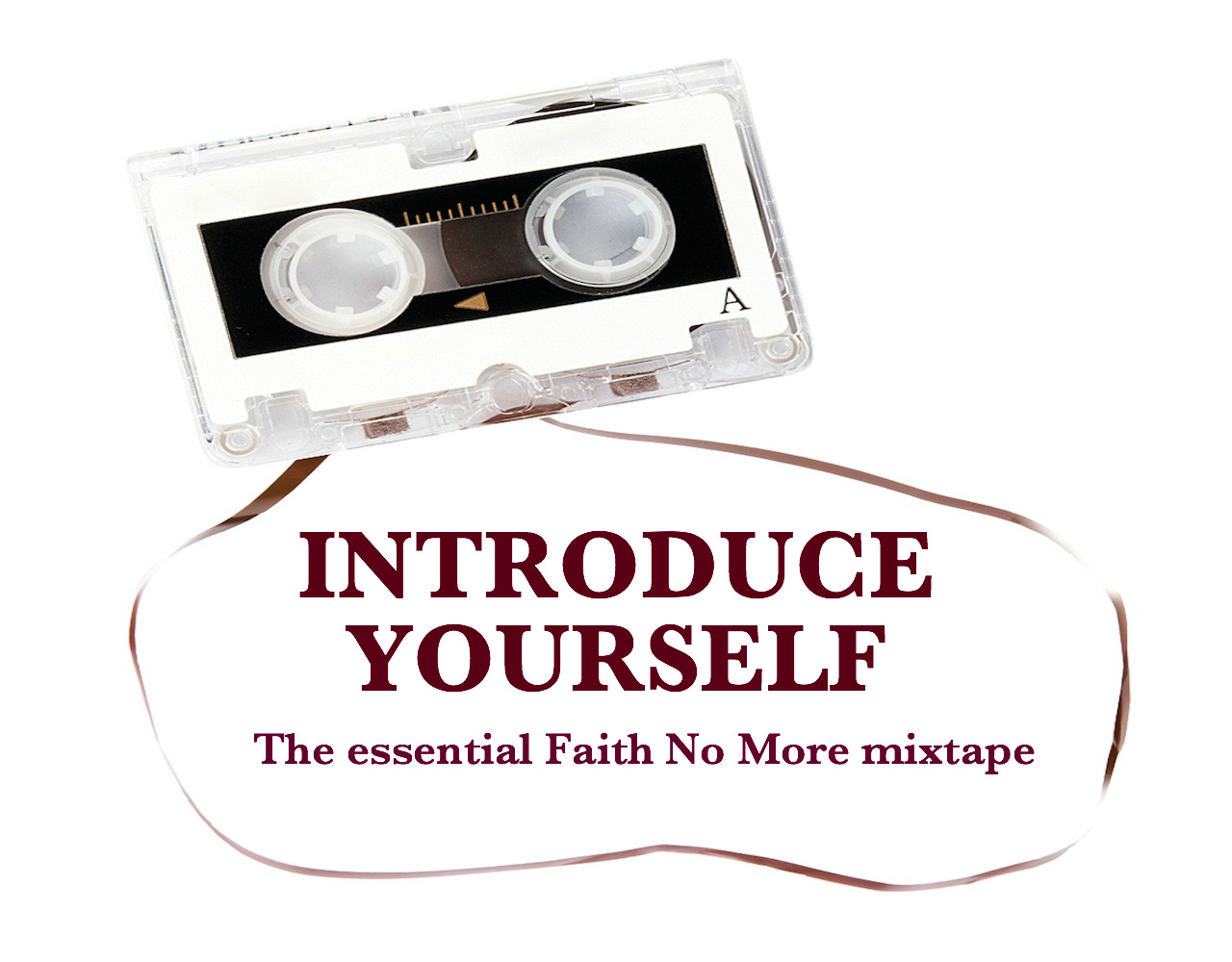
WE CARE A LOT
Recorded for 1985’s debut album, and re-recorded for follow-up Introduce Yourself two years later, their first signature song introduced the band’s tribal, quasi-funk metal to the world. Intended as an ironic anti-anthem, it quickly became a fully fledged, non-ironic anthem. Oh, the irony.
INTRODUCE YOURSELF
Original(ish) frontman Chuck Mosley was an, ahem, idiosyncratic vocalist, with the sort of range that makes a wilful droner like Killing Joke’s Jaz Coleman sound like he’s auditioning for Nightwish. But in the context of FNM, it worked brilliantly, as the breathless thrash of the title track to their second album proved.
FROM OUT OF NOWHERE
Exit Chuck Mosley, enter 20-year-old wunderkind Mike Patton. And what an entrance: this exhilarating rush of hair and keyboards took them out of the alt-rock ghetto and into the UK Top 30. Arriving at the height of hair metal’s heyday in 1989, it was a beacon to the future.
THE COWBOY SONG
Sure, Epic and Falling To Pieces were huge hits. But one of the finest songs from The Real Thing era was tucked away on the B-side of the From Out Of Nowhere. Sepulchral, serrated and uplifting, it’s one for the true connoisseurs.
EVERYTHING’S RUINED
Amid the twisted noise-scapes of the ‘challenging’ Angel Dust were three sparkling singles: the Simon & Garfunkel-sampling Midlife Crisis, the oriental role-play of A Small Victory, and this jagged gem, which sugared the pill with one of the sweetest choruses FNM ever recorded.
ANOTHER BODY MURDERED
What other band would think to follow up a hit cover of The Commodores’ Easy with a menacing collaboration with hulking Samoan-American hip-hop bruisers Boo-Yaa T.R.I.B.E? Yep, you got it. Lifted from the soundtrack to the flop 1993 cop movie Judgement Day, this was the best thing about both film and album.
DIGGING THE GRAVE
Recovering from smack addition and mourning the death of his father, Roddy Bottum sat out much of 1995’s King For A Day… Fool For A Lifetime. While it missed the depth his keyboards brought, it made up for it in breadth, from the 70s cop show vibe of Evidence to the twisted-but-tuneful thrash of this, its first single.
THIS TOWN AIN’T BIG ENOUGH FOR BOTH OF US
This 1997 single found our heroes teaming up with 70s art-glam fops Sparks and proceeding to wrestle the latter’s heroically camp 1974 hit single to the ground. Not so much drawing a moustache on the Mona Lisa as scratching a cock and balls onto one of Andy Warhol’s soup cans.
ASHES TO ASHES
By the time of 1997’s oh-so-ironically-titled Album Of The Year, Faith No More had been overshadowed by the nu metal bands they’d inadvertently inspired. But Ashes To Ashes showed that they could still pull out a soaring mini-epic (pardon the pun) when they wanted to. A glorious farewell – even if it turned out not to be permanent.
MOTHERFUCKER
Eighteen years after their last outing, Faith No More 2.0 return with Sol Invictus, an album that stands alongside the very best of their illustrious output. In typically contrary fashion, its most radio-friendly song comes saddled with a title that will get it precisely zero airplays anywhere. By god, we’ve missed ’em.
WE CARE A LOAD
How metal’s oddballs had a special link with a certain group of thrash legends…
Although they usually kept other bands at arms’ length, FNM had a close relationship with Metallica.
“I went to school with Cliff Burton,” Bordin recalls today. “I sat with Cliff in his room: ‘You gonna play bass? OK, I’ll play drums.’”
They grew up listening to Sabbath, Thin Lizzy, UFO and Deep Purple. But their tastes soon expanded.
“Me and Cliff went to see the Sex Pistols at Winterland in San Francisco – their last show,” says Mike. “People say it sucked. It was fucking amazing. We also saw Andrés Segovia play his last shows – the greatest classical guitarist in the world. But we also saw Kiss on the Destroyer tour. The point is that we all got a whole lot of love for a lot of different music.”
The late 70s saw Bordin and Burton team up with guitarist Jim Martin, in the bar band EZ-Street. Within a few years, their paths had split: Bordin and Martin were in Faith No More, and Burton had joined Metallica. Even after Burton’s death in September 1986, the links between the band remained strong. James Hetfield sported a Faith No More t-shirt in a photo on the back cover of Metallica’s $5.98 E.P. – Garage Days Re-Revisited in 1987, and later joined the band during their cover of War Pigs at a Sacramento show in ’89.
But the professional relationship between the two bands seemed to come to a halt when FNM opened the bill on the 1992 tour co-headlined by Metallica and Guns N’Roses. It was an experience that FNM openly loathed, mocking the headlining bands from the stage.
“Everybody knew Axl was going to come on late, so they turned up three hours later,” recalls Billy Gould. “Every time we played, it was to about 150 people. After three months of that, it was, like, ‘What are we doing here?’ It was a strange experience.”/o:p
LEADERS OF MEN
From metal legends to rappers, FNM’s influence stretches far and wide…
THE OTHER BANDS
MR. BUNGLE: Mike Patton’s original band. Returned sporadically over the years.
BRUJERIA: Billy Gould’s faux-hispanic death metal band.
IMPERIAL TEEN: Roddy’s indie-rock side-project. Still a going concern.
THE EXTENDED FAITH NO MORE FAMILY
OZZY OSBOURNE: Black Sabbath legend. Enlisted Mike Bordin for his solo band, 1996-2009.
JERRY CANTRELL: Mike Bordin played on his 2002 solo album, Degradation Trip.
KORN: Mike Bordin deputised for injured drummer David Silveria in 2000-2001.
TOM MORELLO: Played in Kiss covers supergroup Shandi’s Addiction with Billy Gould.
MAX CAVALERA: Recruited Mike Patton for Lookaway on Sepultura’s Roots album (1996).
JELLO BIAFRA: Dead Kennedys singer and member of Axis Of Merry Evildoers with Billy Gould.
THE DILLINGER ESCAPE PLAN: Patton appeared on the New Jersey band’s 2002 Irony Is A Dead Scene EP.
JEFF WALKER: Carcass frontman. Billy Gould engineered his album, Welcome To Carcass Cuntry (2006).
DAVE LOMBARDO: Ex-Slayer drummer. Collaborated with Mike Patton in Fantômas.
BJÖRK: Icelandic singer. Mike Patton appeared on her album Medúlla in 2004.
JOHN ZORN: Avant garde jazz saxophonist. Patton collaborated with him several times.
WILL SMITH: Patton provided vampire voices in Will Smith’s 2007 film I Am Legend.
KOOL KEITH: US rapper who worked with Patton on the Peeping Tom project.
THE EX-MEMBERS
COURTNEY LOVE: Singer in early lineup before forming Hole.
CHUCK MOSLEY: Vocalist on FNM’s first two albums.
JIM MARTIN: Multi-spectacled guitarist. Departed after Angel Dust.
TREY SPRUANCE: Mr. Bungle guitarist. Played on 1995’s King For A Day…
DEAN MENTA: Replacement for Trey Spruance. Lasted one tour.
THE FOLLOWERS
KORN: Nu metal pioneers. Openly acknowledge FNM’s influence.
FEAR FACTORY: Billy Gould guested on their 2005 album, Transgression.
SLIPKNOT: Corey Taylor has admitted that FNM were a massive influence.
DISTURBED: Covered Midlife Crisis as a B-side.
THE FAMOUS FANS
JAMES HETFIELD: Wore a Faith No More t-shirt on their $5.98 EP.
SOUNDGARDEN: Toured with FNM in 1990 on a tour headlined by Voivod.
THE FRIENDS AND COLLABORATORS
CLIFF BURTON: Metallica bassist and schoolfriend of Mike Bordin.
BOO-YAA T.R.I.B.E: Samoan-American hip-hop outfit. Collaborated with FNM on Another Body Murdered.
SPARKS: US 70s art-glam dandies. Worked with FNM on 1997’s Plagiarism album.
THE RANDOM CONNECTIONS
LIONEL RICHIE: Legendary R&B titan. FNM covered his song Easy.
RED HOT CHILI PEPPERS: Anthony Kiedis accused Patton of ripping him off, prompting a longstanding feud.
Dave Everley has been writing about and occasionally humming along to music since the early 90s. During that time, he has been Deputy Editor on Kerrang! and Classic Rock, Associate Editor on Q magazine and staff writer/tea boy on Raw, not necessarily in that order. He has written for Metal Hammer, Louder, Prog, the Observer, Select, Mojo, the Evening Standard and the totally legendary Ultrakill. He is still waiting for Billy Gibbons to send him a bottle of hot sauce he was promised several years ago.

